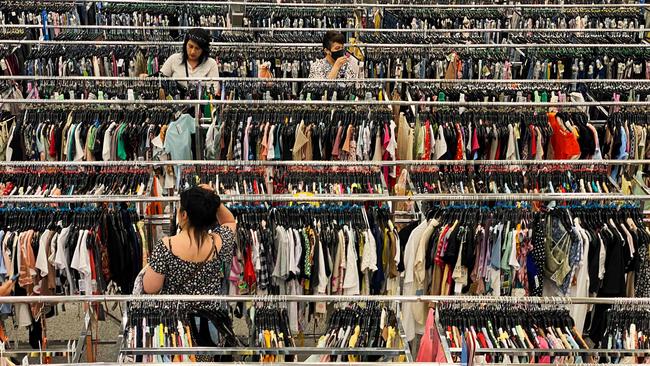
But during the 1970s something changed. A new iteration of the department store emerged. It may have evolved in America but it flourished in Australia. This was the discount department store; it is still with us today, albeit in a much evolved format. This new kind of store was laid out in a building across a single level with an adjoining carpark. The merchandise was stacked in self-service rows behind a bank of checkouts. The ownership model shifted from family to corporate.
This was a model that could be replicated throughout the suburbs and across Australia. By the late 1980s they were in every Australian city with a population of 20,000 or more. Later, trimmed-down versions spread into smaller urban centres. Old-world-style department stores struggled against this megashift in consumer behaviour. Greater prosperity in middle Australia, largely delivered by women entering and remaining in the workforce, demanded change to the system by which the (consumer) stuff of everyday life was accessed. Grocery shopping shifted to supermarkets. Convenience ruled. The supermarkets had to stock everything; good road access and a car park were essential. Products had to be mass-produced and marketed via mainstream media and by coordinated catalogue drop.
But then, in the early years of the 21st century, another megatrend was quietly changing the way shoppers shopped. China had emerged as a global manufacturing power. Increasing prosperity demanded more specialised products in a wider range at ever cheaper prices. The response was large format stores in hardware, electrical, whitegoods, furniture and recreational categories such as camping. The demand driver for this new bulky form of retail format was clear. Over the previous 20 years the suburban home had evolved from a plain brick veneer to a bulked-up McMansion that struggled to fit into a standard-sized block.
It seems the retail eras are shortening, the pace of change is quickening. Family-owned department stores dominated for 50 years, discount stores for 30 years, large format stores for 20 years. The latest advance uses new technology platforms to co-ordinate the delivery of goods direct to consumers. No shopping trip required. Of course, some shoppers will always prefer in-store shopping while others are full-on online aficionados. But physical stores have adjusted by adding click-and-collect to the in-store experience.
All of this has come about due to rising prosperity, a demand for convenience and the advent of digital platforms. So what lies ahead? Perhaps better logistics, greater range, quirkier products, more targeted marketing matching in-store products to algorithm-mined individual preferences. Or maybe the way forward lies more in post-material thinking, such as preferencing products that are ethically sourced. What is evident is the vibrancy, the pace of change, and the susceptibility of the retail industry to quantum shifts in consumer behaviour.




In the 1960s Australian women would dress up (meaning with hat and gloves) to go shopping “in town” (meaning to a CBD department store). And such stores were different in each state. Melbourne had Myer, Sydney Grace Bros, Brisbane McDonnell & East, Adelaide John Martin’s, Perth Boans. And that was just the big capital cities. Many provincial towns and cities had their own department stores, often owned by a local family. These stores dominated the years across the Great War, the Great Depression and the post-World War II decade.